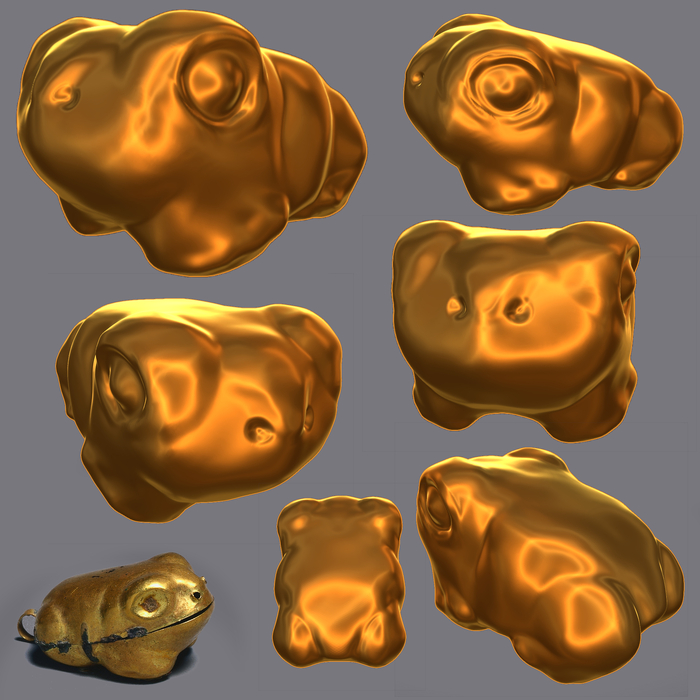The Little Froggie From Peru
Monday • June 6th 2022 • 5:01:57 pm
Upon having sculpted my little Peru froggie friend,
I begun pondering what more can be done with little rebuilt artifacts.
I came across a really sad story from Pompeii,
about A Sorceress’ Kit being found.
There I noticed all the little bits had holes in them,
to hang them on necklaces and such.
So selling a Sorcerer’s Kit,
is another thing that can be done.
I pondered creating a low polygon version,
which is a geometric wire frame.
But this has to be designed from scratch as such,
reducing geometry of a sculpted piece just distorts it.
For blobby sculptures like the froggie,
it is easy to apply the Solidify modifier to make it hollow.
Using a boolean modifier to subtract some of the bottom,
can make a sculpture it stand flat.
I think my best idea is to split the froggie,
very much like the original.
Which calls for intersecting it with a plane,
using difference boolean modifier and parting it.
Then giving it thickness with Solidify,
followed by a hinge and a locking mechanism.
This way it can become a little trinket box,
this seems like something that should be done manually.
Geometry nodes, may not be the best choice here,
because of how complex the sculpted mesh usually is.
Majority of 3D printed jewelry is about thin wires,
a lot of open space that a human hand can’t create.
It makes a piece look intricate,
and saves on material costs.
I have noticed plastic jewelry somewhat seems OK,
a golden silky filament could maybe make something, but I am not too sure.
The Moche Culture that the Froggie originates from,
is theorized to have faded away 1300 years ago due to climate change.
I could tell the original artist was studying frogs,
it wasn’t just from memory.
They gave the frog a belly, a strong brow, a nose,
and there is a hint of front legs too.
Whether it is jewelry, a game piece,
or sold as an STL digital model that others can use in their own pursuits.
Rebuilding a 1500 year old artifact,
was quite an amazing adventure.
